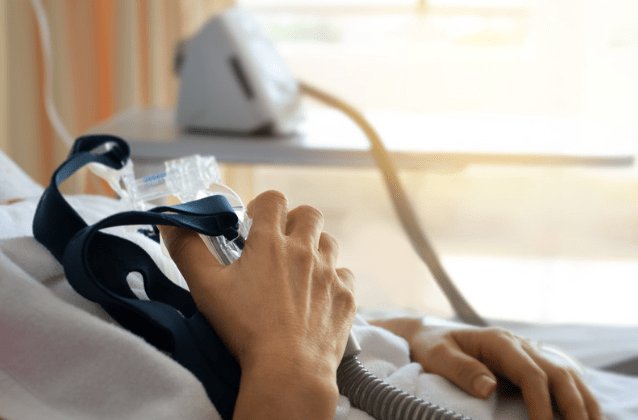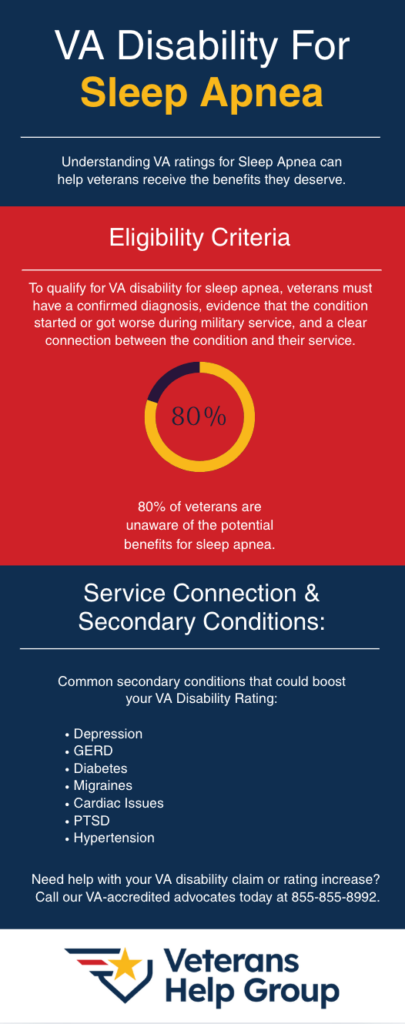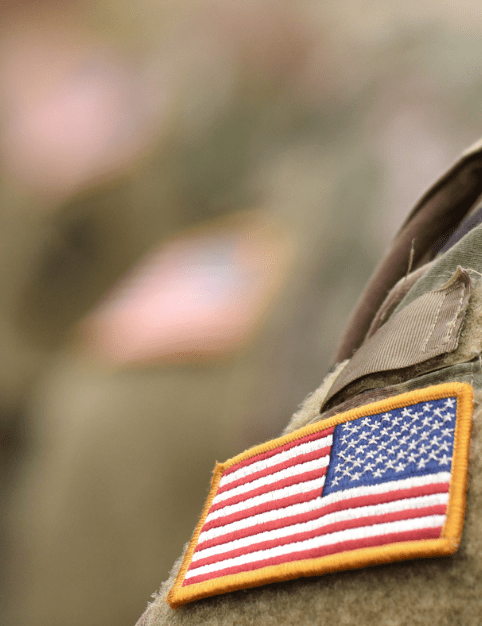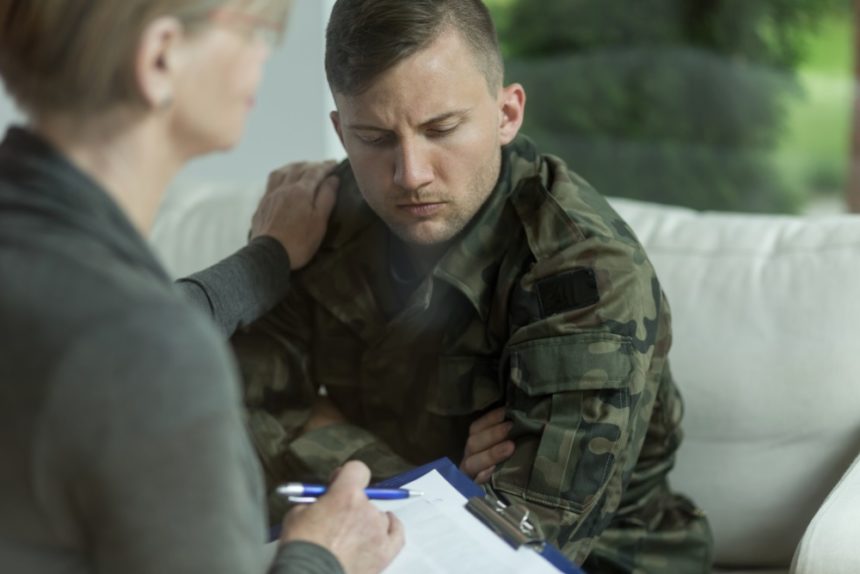
Table Of Contents
Your Guide to VA Ratings: Sleep Apnea
Sleep apnea can be a serious condition that may impact day-to-day life and can increase the risk of serious medical issues such as hypertension, diabetes, and heart disease. Sleep apnea may be a service-connected condition for veterans disability benefits, or it may be secondary to a service-connected condition.
The VA recognizes three types of sleep apnea: obstructive, central, and mixed. All three are treated the same for disability rating purposes. Obstructive sleep apnea is the most common, and takes its name from the way the problem occurs: the muscles of the throat relax to the point that the flow of air is obstructed. Central sleep apnea, which is far less common, occurs when the brain fails to send the correct signals to regulate breathing. Finally, complex sleep apnea is a combination of the two. In some cases, central sleep apnea is triggered by treatment for obstructive sleep apnea.
About VA Disability Ratings
When the VA determines that you suffer from one or more service-connected conditions, they will assign a disability rating for each condition. Ratings are assigned in increments of 10, from 0% to 100%. If you have more than one service-connected condition, the VA uses a formula to combine the ratings for your various disabilities.
If you have a 60% VA disability rating for an unrelated condition and then receive a 30% disability rating for sleep apnea, that doesn’t mean you have a 90% disability rating. Instead, the 30% disability rating assigned for sleep apnea is applied to what’s left over after your existing disability rating. In this case, the veteran had a 60% rating for another condition, meaning 40% remaining to work with.
The 30% sleep apnea rating would be applied to that 40% (.30 x .40), which works out to .12, or 12%. That’s added to the 60% rating, for a total of 72%. However, since all disability ratings are in increments of 10, that will be rounded to the nearest 10–in this case, 70%.

VA Ratings for Sleep Apnea
Currently, 38 C.F.R. Part 4 provides for four possible disability ratings for sleep apnea:
- 0%: A 0% disability rating is assigned when the veteran has been diagnosed with this condition but is not experiencing symptoms. A veteran with a 0% rating is not entitled to disability payments but may qualify for other VA disability benefits, such as medical care for the service-connected conditions if income qualified.
- 30%: A 30% disability rating is assigned when the veteran suffers from “persistent daytime hypersomnolence” due to sleep apnea. A veteran receiving this rating will be entitled to monetary benefits of $537.42/month in 2025, along with some other benefits such as no-cost medical care and prescriptions for service-connected disabilities.
- 50%: A 50% disability rating is assigned for sleep apnea when the veteran requires the use of a breathing assistance device such as a CPAP machine. With a 50% rating, the veteran will be entitled to monthly monetary benefits in the amount of $1,102.04 and other benefits, including broader healthcare coverage.
- 100%: A 100% disability rating is assigned when the veteran suffers from chronic respiratory failure with carbon dioxide retention or cor pulmonale or requires tracheostomy. With a 100% rating, the veteran will receive full disability payments (in 2025, $3,831.30/month) and other VA disability benefits such as no-cost medical care and prescriptions, and healthcare and educational benefits for dependents.
Note, however, that the VA has proposed changes to the sleep apnea rating system. Those changes are widely expected to take effect by the end of 2025, and none of them will benefit veterans.
Proposed changes include:
- Creation of a 10% VA disability rating for sleep apnea when treatment is only partially effective
- Elimination of the 30% disability rating for those with persistent hypersomnolence
- A change in the criteria for the 50% rating, which would be available only to those for whom treatment was ineffective, or who could not tolerate treatment due to serious effects like organ damage
The change in the 50% rating criteria would eliminate the 50% disability rating for those who are dependent on a CPAP device or similar device due to sleep apnea.
Claiming VA Disability for Sleep Apnea? Timing Counts
The changes described above will put veterans seeking VA disability for sleep apnea in the future at a significant disadvantage, particularly those who must use CPAP devices to control their condition or those who suffer from chronic daytime sleepiness.
However, veterans who have already received a rating for sleep apnea when the change takes place will not lose their ratings. So, if you suffer from sleep apnea and have reason to believe it may be service-connected or secondarily connected to a service-connected condition, you’ll want to act quickly to file your claim. A VA-accredited disability benefits advocate can help.
Get Help with Your VA Disability Benefits Claim
Veterans disability benefits can provide important support for disabled veterans and their dependents. But, securing benefits and a fair disability rating can be a challenge.
To be awarded benefits for sleep apnea, you will first have to present medical evidence that you have been diagnosed with sleep apnea. Then, it will be your responsibility to demonstrate that your sleep apnea is service-connected. Sleep apnea isn’t presumed service-connected, so this will typically require both evidence of the event that triggered your sleep apnea and medical evidence of the connection to your condition. Finally, it will be up to you to show that your symptoms fulfill the requirements for a particular disability rating.
At Veterans Help Group, our VA-accredited advocates have thorough knowledge of the disability claims and appeals processes and the type of evidence necessary to establish a claim. A veterans disability advocate can help you put together the strongest application and documentation possible, to increase the likelihood that your benefits will be approved at the maximum disability rating possible.
Veterans Help Group is here for you. To learn more, call 855-855-8992 or click here to fill out our contact form.
Learn More About VA Disability Below:

What is the VA DBQ?
What is a VA DBQ? A VA Disability Benefits Questionnaire (DBQ) is a form used to convey medical...

Why Does the VA Deny So Many Veteran Disability Claims?
There are several reasons why the VA denies so many veteran disability claims. Knowing them can help you improve your chances of being approved on your next application or appeal.

VA Medical Centers Face Record Staffing Shortages: What This Means for Veterans
VA Medical Centers Face Record Staffing Shortages: What This Means for Veterans On August 12,...





